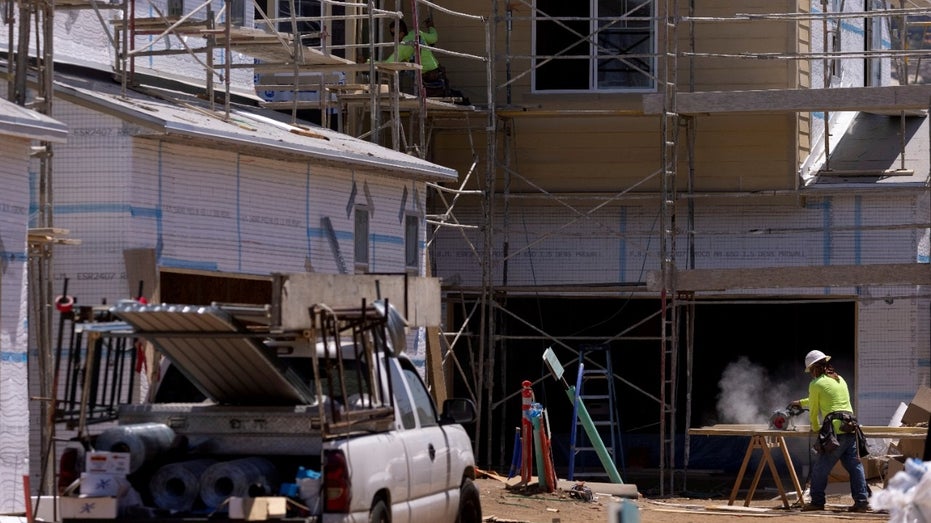Housing inflation, supply chain create builders' perfect storm
Lumber prices over the past year added over $18,600 to the average price of a new single-family home: NAHB
Lumber costs, delays add to housing market pressures
National Association of Home Builders CEO Jerry Howard says the construction industry is getting "nervous" despite high demand.
Like many consumers, U.S. homebuilders are feeling an inflation pinch as the industry stares down rising costs and ongoing supply chain delays.
"The No. 1 problem right now is increased building material costs and the delay in getting them," National Association of Home Builders CEO Jerry Howard told FOX Business' Stuart Varney Wednesday.
"I've had guys tell me they're having up to four- or five-month delays in getting everything from cabinets, garage doors, appliances, even trusses."
| Ticker | Security | Last | Change | Change % |
|---|---|---|---|---|
| WHR | WHIRLPOOL CORP. | 86.12 | -1.01 | -1.16% |
Whirlpool, in its January earnings presentation, noted that "supply constraints and inflationary pressures will persist" in 2022.
| Ticker | Security | Last | Change | Change % |
|---|---|---|---|---|
| WOOD | ISHARES TRUST GLOBAL TIMBER & FORESTRY ET | 75.14 | -1.61 | -2.09% |
| CUT | INVESCO EXCHANGE TRADED FD TR II MSCI GLOBAL TIMBER ETF | 30.21 | +0.51 | +1.72% |
As for costs, lumber prices are up 32% over the past year, approaching record levels hit last May.

(Source: Trading Economics )
Prices for lumber, used for framing a home, have added more than $18,600 to the average price of a new single-family home. The lumber price hike has also added nearly $7,600 to the market value of the average new multi-family home, which translates into households paying $67 a month more to rent a new apartment.

Workers install roofing on an apartment complex under construction in Lehi, Utah. (George Frey/Bloomberg via Getty Images / Getty Images)
Aluminum has gained over 56% during the past 12 months and is just shy of a record high of $3,300 per ton, as noted by Trading Economics.

(Source: Trading Economics )
| Ticker | Security | Last | Change | Change % |
|---|---|---|---|---|
| IYM | ISHARES TRUST DOW JONES US BASIC MATERIAL | 169.72 | +0.26 | +0.15% |
According to NAHB Chief Economist Robert Dietz, overall residential construction costs are up 21% year-over-year. The increased costs coincide with the 30-year fixed-rate for mortgages surpassing 4%, the largest single-week increase since March 2020.
"These higher development costs have hit first-time buyers particularly hard," Dietz said. "Higher interest rates in 2022 will further reduce housing affordability even as demand remains solid due to a lack of resale inventory."
On Wednesday, homebuilder confidence unexpectedly slipped to a reading of 82 in February, down one point compared to the previous month. Still, a reading above 80 signals strong demand.
| Ticker | Security | Last | Change | Change % |
|---|---|---|---|---|
| TOL | TOLL BROTHERS INC. | 143.87 | -2.81 | -1.92% |
| DHI | D.R. HORTON INC. | 153.19 | -2.77 | -1.78% |
| LEN | LENNAR CORP. | 115.16 | -3.43 | -2.89% |
| MTH | MERITAGE HOMES CORP. | 74.66 | -1.49 | -1.96% |
30-YEAR FIXED-RATE MORTGAGE SAW BIGGEST WEEKLY JUMP SINCE MARCH 2020
"What we're seeing on the cost side … they're increasing as of right now," Meritage Homes CEO Phillippe Lord said during the company's earnings call in late January. "We feel like we have the pricing power to maintain our margins into next year. It feels like the market is going to give us the pricing power we need, and given the lack of supply in the market, we will be able to overcome that"
On a regional basis, homebuilder confidence in the Northeast increased three points to 76, while the West rose one point to 89, the Midwest fell one point to 73 and the South edged one point lower to 86.
CLICK HERE TO READ MORE ON FOX BUSINESS

Residential single-family homes by KB Home are shown under construction in the community of Valley Center, Calif., June 3, 2021. (Reuters/Mike Blake)
GET FOX BUSINESS ON THE GO BY CLICKING HERE
The index's component assessing sales for the next six months fell two points to a reading of 80, while the component for prospective buyer traffic dropped four points to 65. Meanwhile, the component gauging current sales conditions increased one point to a reading of 90.





















